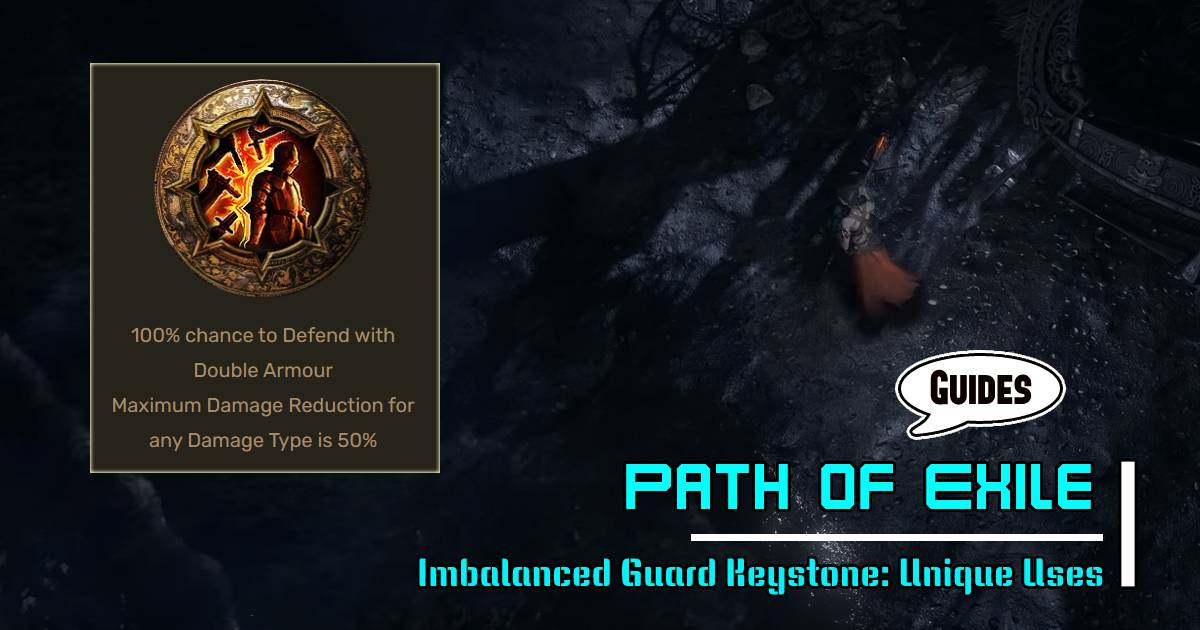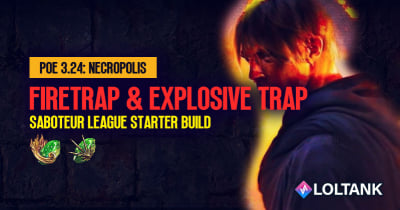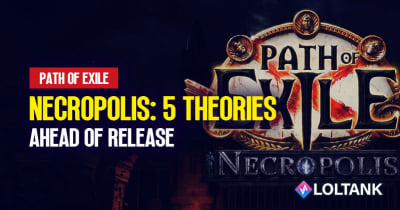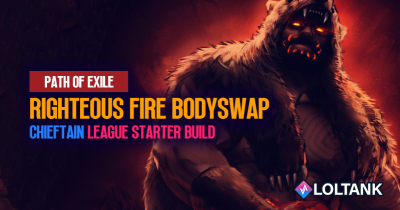PoE Imbalanced Guard Keystone: Unique Uses for Damage Reduction
- Vernie
- Share
- Path of Exile
- 06/11/23
- 7770
In Path of Exile, keystones play a crucial role in defining the mechanics and interactions of character builds. In this guide, we will explore one of the least popular keystones in the game, the Imbalanced Guard. Despite its lack of popularity, this keystone has its unique uses and requires a deep understanding to make effective use of it. We will delve into the mechanics, interactions, and various scenarios where Imbalanced Guard can be beneficial.
- Overview of Imbalanced Guard Keystone
- Understanding Damage Reduction
- The Upside of Imbalanced Guard
- Analyzing Numerical Examples
- Considering Additional Physical Damage Reduction
- Special Cases and Usage

↖ Overview of Imbalanced Guard Keystone
Imbalanced Guard is located on the core passive tree between the Marauder and Duelist start locations, adjacent to the Soul of Steel wheel. This keystone offers two modifiers: 100% chance to defend with 200% of armor and a maximum damage reduction of 50% for any damage type.
↖ Understanding Damage Reduction
To comprehend Imbalanced Guard's effects, it's crucial to distinguish between damage reduction and other defensive mechanics. Damage reduction typically includes physical damage reduction gained from armor and other modifiers like endurance charges or specific keystones that convert armor to damage reduction against elemental or chaos damage. On the other hand, resistances, damage-taken modifiers (e.g., Fortify), and spell suppression are not considered as damage reduction.
↖ The Upside of Imbalanced Guard
Imbalanced Guard provides a significant upside to characters when it comes to defending against hits of physical damage. This keystone doubles the armor value specifically for defending against physical hits, effectively increasing damage mitigation. However, it does not affect other aspects such as scaling the Molten Shell buff or increasing damage from specific sources like Replica Dreamfeather's unique weapon.
↖ Analyzing Numerical Examples
Let's consider a character with 10,000 armor and examine how Imbalanced Guard affects damage reduction for different hit sizes.
- Small Hit: If the character takes a hit of 200 physical damage, without Imbalanced Guard, it would be reduced to 20 physical damage. However, with Imbalanced Guard, the hit would be reduced to 100 physical damage due to the cap on damage reduction at 50%.
- Moderate Hit: For a hit of 2,000 physical damage, both with and without Imbalanced Guard, the character would take 1,000 physical damage.
- Large Hit: When facing a hit of 5,000 physical damage, without Imbalanced Guard, the character would take approximately 3,575 physical damage. However, with Imbalanced Guard, the character would take about 2,775 physical damage.
↖ Considering Additional Physical Damage Reduction
If the character has additional physical damage reduction, such as from endurance charges, the impact of Imbalanced Guard becomes more nuanced. It's important to note that damage-taken modifiers like Fortify are applied separately and are not subject to the 50% cap imposed by Imbalanced Guard.
↖ Special Cases and Usage
The decision to use Imbalanced Guard on a character depends on various factors. In general gameplay, for average builds with moderate amounts of armor, using this keystone may result in taking more damage from smaller hits while reducing damage from larger hits. This trade-off might not be preferable for most situations, as armor is typically more effective against smaller hits.
However, there are specific scenarios where an Imbalanced Guard can be beneficial. For boss fights, especially when facing devastating slams, Imbalanced Guard provides significant upside without losing damage reduction from other damage types. It can also be useful for characters with extremely low amounts of armor or when paired with specific unique items that provide flat armor.
Conclusion:
Imbalanced Guard is a keystone with limited use cases and is often misunderstood or overlooked due to its trade-off between damage reduction against small and large hits. While it may not be beneficial for most average builds.
Most Popular Posts
- Poe 3.21 Builds | Crucible League Starter & EndGames Builds
- Top 5 Best Ways to Get 6-Link Easily and Efficiently in POE 3.21
- PoE 3.21 Boneshatter Juggernaut League Starter Build
- POE 3.21 Arc Lightning Hierophant League Starter Build
- POE 3.21 Ultimate Forged Frostbearer Raise Spectre Necromancer Build | 100+M DPS
- How to Succeed in Path of Exile Ruthless Mode?
Popular Category Lists
- Path of Exile / (873)
- Diablo IV / (702)
- Runescape / (344)
- New World / (172)
- WoW Classic SoD / (171)
- Guild Wars 2 / (159)
- Elder Scrolls Online / (138)
- FFXIV / (135)
- World of Warcraft / (65)
- WOW Classic / (43)
- Elden Ring / (40)
- Throne and Liberty / (36)
- SWTOR / (35)
- Albion / (35)
- Last Epoch / (32)
- League of Legends / (30)
- Dark and Darker / (28)
- Fallout 76 / (27)
- WotLK Classic / (23)
- Genshin Impact / (22)





 0
0









